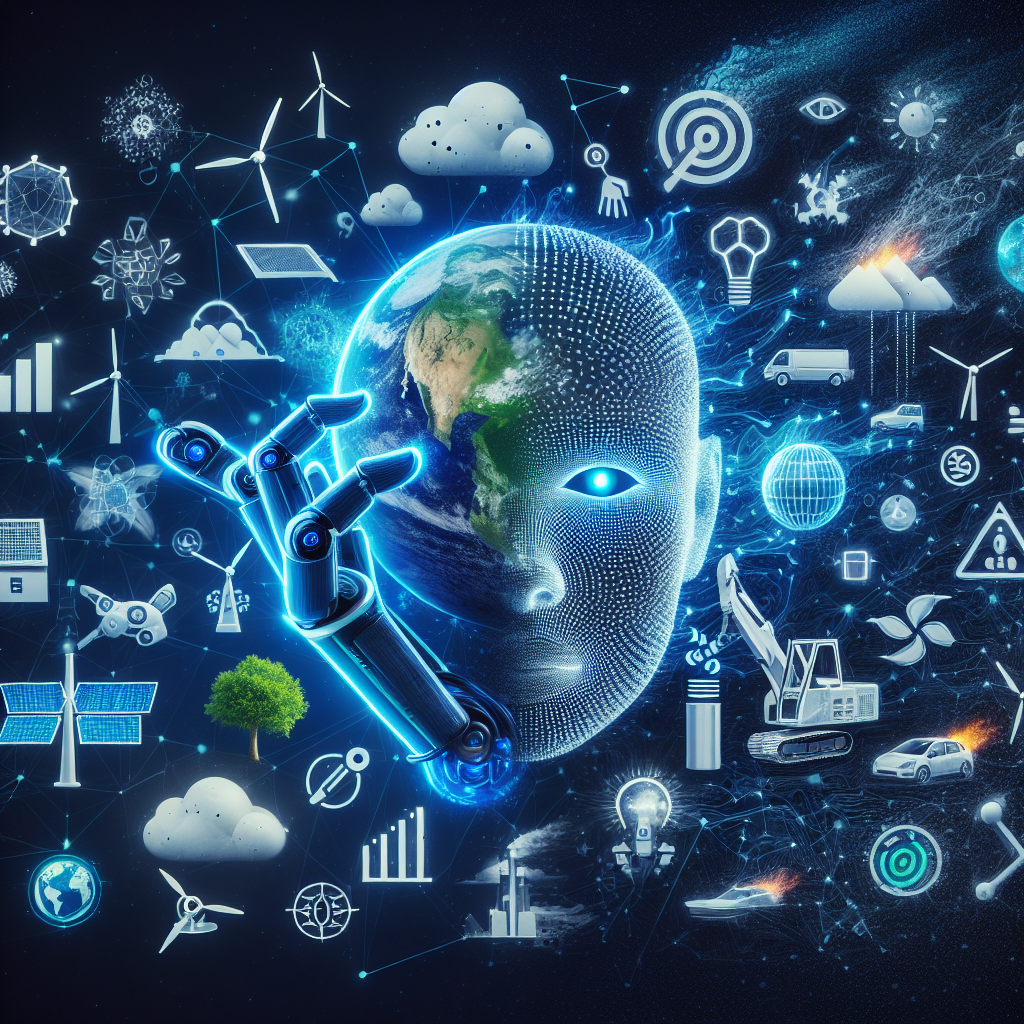Artificial Intelligence and Climate Change: Risks and Solutions
Introduction
Artificial Intelligence (AI) has the potential to revolutionize many aspects of society, including how we address the urgent challenge of climate change. AI technologies can help us better understand the complexities of the Earth’s climate system, optimize energy usage, and develop innovative solutions to reduce greenhouse gas emissions. However, like any powerful tool, AI also comes with risks that need to be carefully managed. In this article, we will explore the intersection of AI and climate change, the potential risks involved, and the solutions that can help us harness AI for the greater good.
The Role of AI in Addressing Climate Change
AI has the potential to play a critical role in tackling climate change in several ways:
1. Climate Modeling: AI can help improve our understanding of the Earth’s climate system by analyzing vast amounts of data and running complex simulations. This can help us better predict future climate trends and develop more accurate models for assessing the impacts of climate change.
2. Energy Efficiency: AI technologies can optimize energy usage in buildings, transportation, and industrial processes, leading to significant reductions in greenhouse gas emissions. For example, AI-powered algorithms can adjust heating and cooling systems in buildings based on occupancy patterns, reducing energy waste.
3. Renewable Energy: AI can help increase the efficiency of renewable energy sources such as solar and wind power. For instance, AI algorithms can optimize the placement of solar panels to maximize energy production or predict wind patterns to optimize the operation of wind turbines.
4. Climate Adaptation: AI can help communities adapt to the impacts of climate change by analyzing data on extreme weather events, sea-level rise, and other climate-related risks. This can help governments and businesses develop more effective strategies for building resilient infrastructure and protecting vulnerable populations.
Risks of AI in Climate Change
While AI offers promising solutions to address climate change, it also comes with potential risks that need to be carefully managed:
1. Energy Consumption: AI models require significant computational power, which can lead to increased energy consumption and carbon emissions. As AI technologies become more widespread, their energy usage could become a significant contributor to climate change.
2. Bias and Inequity: AI algorithms can reflect the biases present in the data used to train them, leading to unfair outcomes for marginalized communities. In the context of climate change, this could result in unequal access to resources or disproportionate impacts on vulnerable populations.
3. Security and Privacy Concerns: AI systems used to monitor and control critical infrastructure, such as energy grids or transportation networks, could be vulnerable to cyber attacks. A breach in these systems could have serious consequences for climate change mitigation efforts.
4. Unintended Consequences: AI systems are complex and can be difficult to predict, leading to unintended consequences that may exacerbate rather than alleviate climate change. For example, an AI-powered decision-making system that prioritizes short-term profits over long-term sustainability could lead to increased emissions.
Solutions to Manage AI Risks in Climate Change
To harness the full potential of AI in addressing climate change while mitigating the risks involved, several solutions can be implemented:
1. Energy-Efficient AI: Researchers and developers can work to optimize AI algorithms and hardware to reduce energy consumption. This could involve developing more efficient algorithms, using renewable energy sources to power data centers, or implementing energy-saving techniques such as model compression.
2. Ethical AI: Organizations using AI in climate change initiatives should prioritize ethical considerations, such as fairness, transparency, and accountability. This can involve auditing AI systems for bias, involving diverse stakeholders in decision-making processes, and ensuring that AI technologies are used in ways that benefit all communities.
3. Cybersecurity Measures: Robust cybersecurity measures should be implemented to protect AI systems from potential attacks that could undermine climate change efforts. This could involve encrypting sensitive data, monitoring for suspicious activity, and regularly updating security protocols.
4. Multi-Stakeholder Engagement: Collaboration between governments, businesses, researchers, and civil society is essential to ensure that AI technologies are used responsibly in addressing climate change. This can involve developing standards and guidelines for AI governance, sharing best practices, and fostering dialogue on the ethical implications of AI.
Frequently Asked Questions (FAQs)
Q: Can AI help predict natural disasters caused by climate change?
A: Yes, AI can help predict natural disasters such as hurricanes, floods, and wildfires by analyzing data on weather patterns, sea-level rise, and other factors. This can help governments and emergency responders prepare for and respond to these events more effectively.
Q: How can AI technologies be used to reduce greenhouse gas emissions?
A: AI technologies can be used to optimize energy usage, increase the efficiency of renewable energy sources, and develop innovative solutions for reducing emissions in sectors such as transportation and agriculture. For example, AI-powered algorithms can help optimize traffic flow to reduce fuel consumption or predict crop yields to minimize the use of fertilizers.
Q: What measures can be taken to ensure that AI is used ethically in climate change initiatives?
A: To ensure that AI is used ethically in climate change initiatives, organizations should prioritize transparency, fairness, and accountability in their decision-making processes. This can involve auditing AI systems for bias, involving diverse stakeholders in decision-making, and ensuring that AI technologies are used in ways that benefit all communities.
Conclusion
AI has the potential to be a powerful tool in addressing the urgent challenge of climate change, offering innovative solutions to reduce emissions, increase energy efficiency, and build resilience to climate impacts. However, the risks associated with AI, such as energy consumption, bias, and security concerns, need to be carefully managed to ensure that AI technologies are used responsibly and ethically. By implementing solutions such as energy-efficient AI, ethical guidelines, cybersecurity measures, and multi-stakeholder engagement, we can harness the full potential of AI in the fight against climate change.

